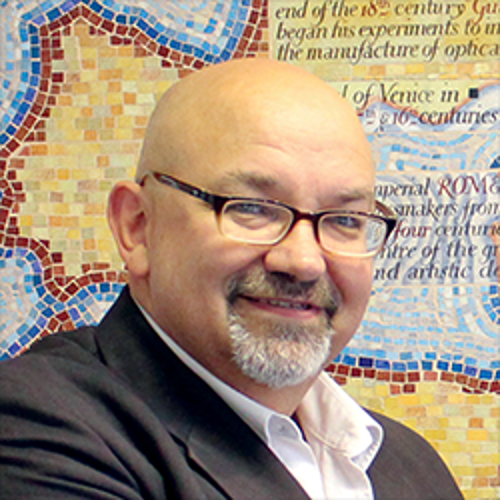
High Energy Density Electrostatic Capacitors
Prof. Ian M. Reaney Department of Materials Science & Engineering (MSE) Functional Materials & Devices Group University of Sheffield, Sheffield, UK
Abstract
Materials exhibiting high energy/power density are currently needed to meet the growing demand of portable electronics, electric vehicles and large-scale energy storage devices. The highest energy densities are achieved for fuel cells, batteries, and supercapacitors, but conventional dielectric capacitors are receiving increased attention for pulsed power applications due to their high power density arising from their fast charge–discharge speed. The key to high energy density in dielectric capacitors is a large maximum but small remanent (zero in the case of linear dielectrics) polarization and a high electric breakdown strength. Polymer dielectric capacitors offer high power/energy density for applications at room temperature, but above 100 °C they are unreliable and suffer from dielectric breakdown. For high-temperature applications, therefore, dielectric ceramics are the only feasible alternative. Lead-based ceramics such as La-doped lead zirconate titanate exhibit good energy storage properties, but their toxicity raises concern over their use in consumer applications, where capacitors are exclusively lead free. Lead-free compositions with superior power density are thus required.
In this presentation, the fundamental principles of energy storage in dielectrics are introduced. Key factors to improve energy storage properties are also discussed such as the control of local structure, phase assemblage, dielectric layer thickness, microstructure, conductivity, and electrical homogeneity. Finally, the future requirements for new materials in high power/energy density capacitor applications are assessed.
Short Biography
Prof. Ian Reaney FIMM FRMS leads the Functional Materials & Devices Group in the Department of Materials Science & Engineering (MSE), which includes 6 PDRAs, 20 PhDs, 10 MScs and 6 academic staff. IMR is a Fellow of the Royal Microscopical Society and the IOM3 and Dyson Chair in Ceramics. He is the European Site Director for the US National Science Foundation funded Center for Dielectrics and Piezoelectrics (CDP). His h-index is 64, with > 15,000 citations. He has won numerous awards including the Verulam Medal (2017) and was recently elected to the World Academy of Ceramics. He is an Adjunct Professor at Pennsylvania State University (PSU) and European site director of the Centre for Dielectrics and Piezoelectrics in partnership with PSU and North Carolina State University.
About the FLAME-inars
The FLAME-inars are organized by the collaborative project FLAME at TU Darmstadt, in which electronic-structure-property relationships are being developed and exploited to realize novel lead-free antiferroelectric compounds. The seminars will gather experts in processing, characterization and theory to discuss materials and applications, bulk and thin films, fundamental properties, electronic structure & defects, and related aspects.



